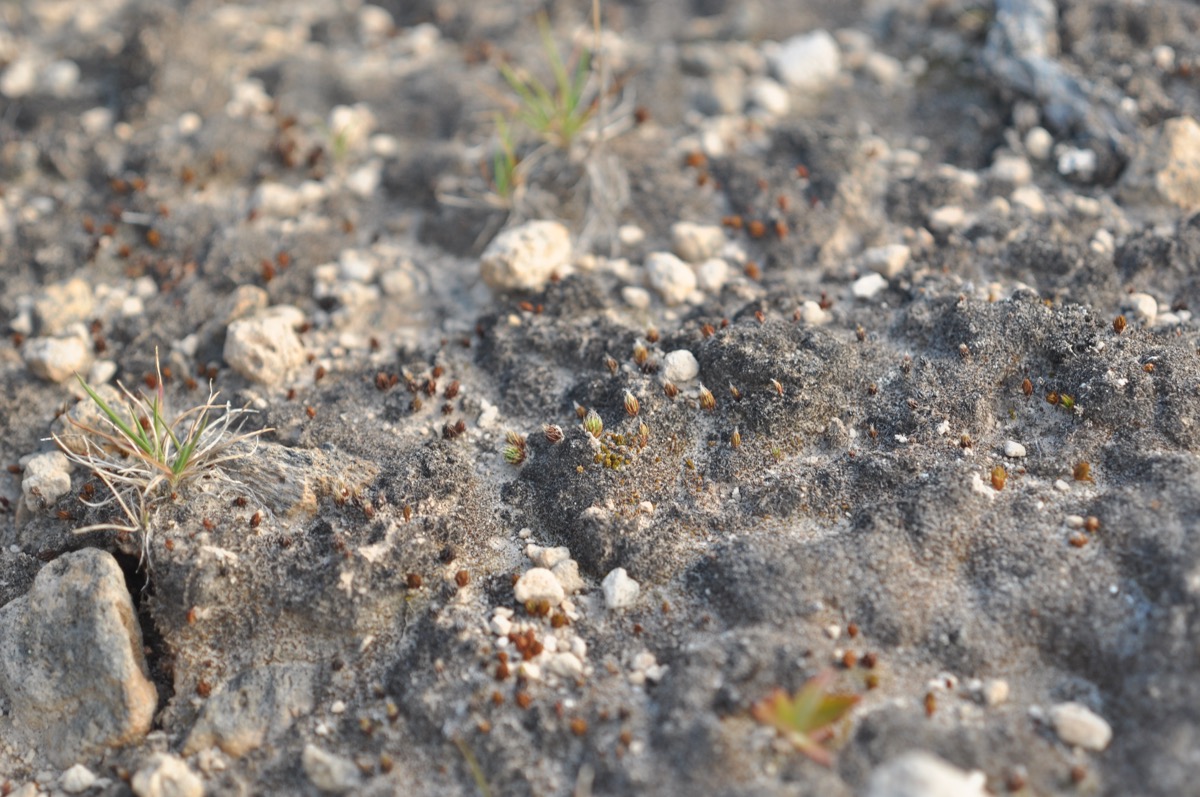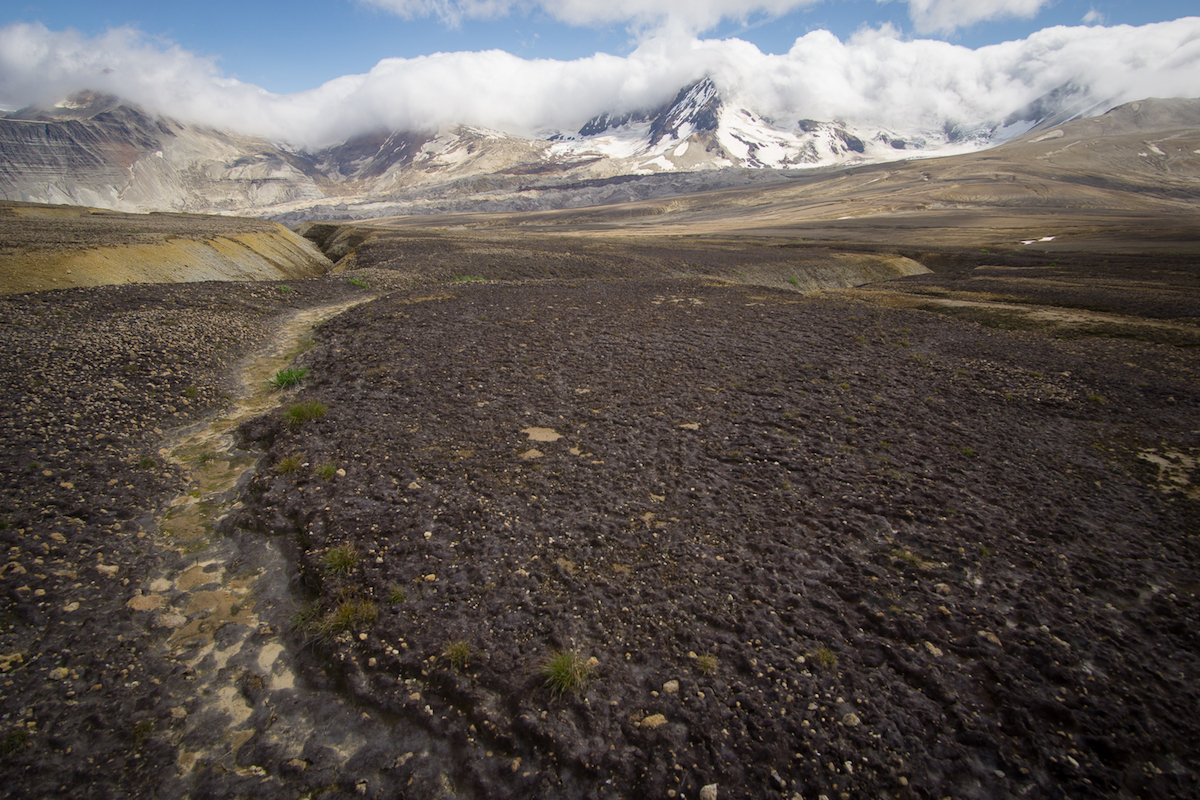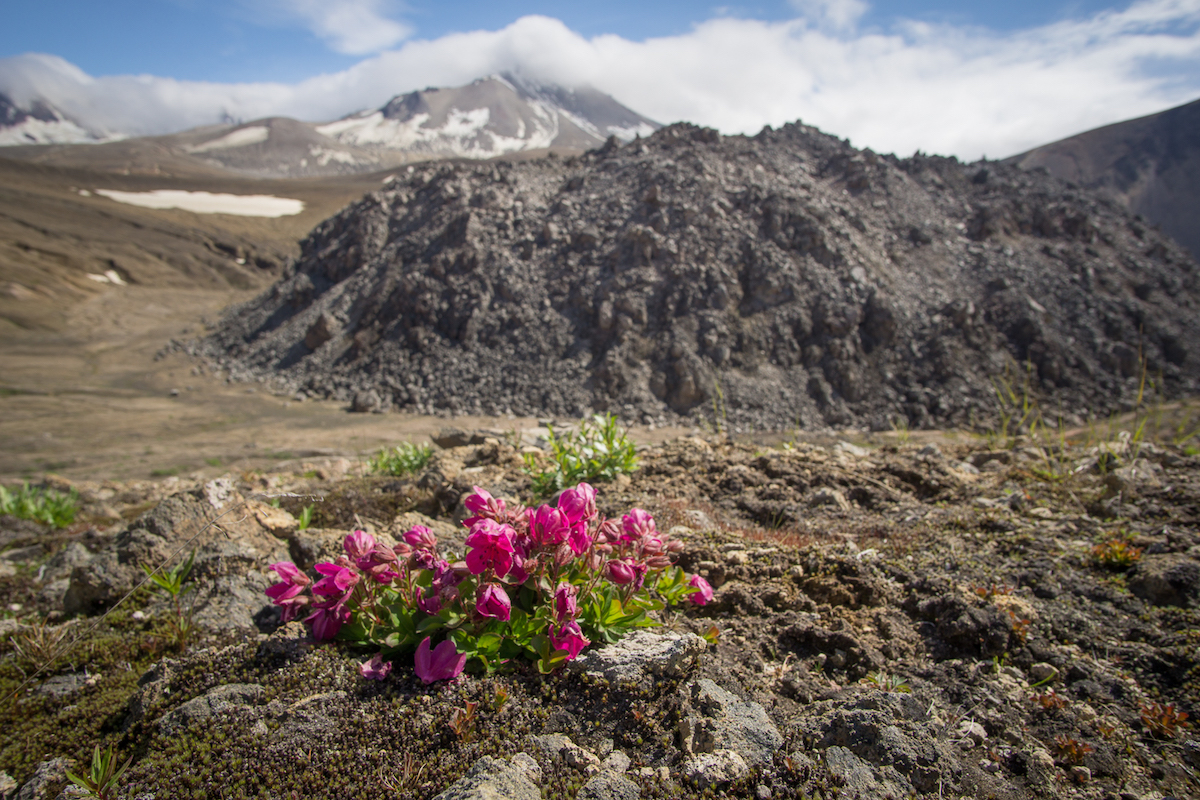 Cryptobiotic soil is integral to the developing platlife in the Valley of Ten Thousand Smokes. NPS Photo.
Cryptobiotic soil is integral to the developing platlife in the Valley of Ten Thousand Smokes. NPS Photo.
When exploring the Valley of 10,000 Smokes in Katmai, you might accidentally step onto a distinct shiny dark earth crust. As you look closer at the ground layer called cryptobiotic soil, miniscule plant life like lichens and mosses growing over this ground layer come into focus.
In 1912, Novarupta spewed out ash for three days, leaving a thick layer over the Valley. This cataclysmic event changed the soil composition of the heart of Katmai.
Cryptobiotic soil, which is fundamentally a crust containing living organisms like cyanobacteria, started to colonize the ash deposits and surrounding tundra in the Valley soon after. Nowadays, it is nearly impossible to miss the precious soil when venturing into the Valley of 10,000 Smokes. This can be a problem though because our presence can have direct effects on growth and development of these soils.
Cryptobiotic soil is a dry, fragile layer. In the face of footsteps, erosion and overall impact, it can be damaged and hold impressions for as little as 20 years in wetter climates and as long as 1000 years in arid desert climates. Keeping on trails, or when it comes to bushwacking in Katmai, stepping on sturdier, less vulnerable soils and covers, can reduce human impact on cryptobiotic soil processes and growth.
 Photo courtesy of A. Ramos: A path from human traffic cuts through cryptobiotic soil.
Photo courtesy of A. Ramos: A path from human traffic cuts through cryptobiotic soil.
One of the oldest known living things on this planet, this type of soil restructured the Earth’s atmosphere and is a huge part of why other organisms can live and grow on this planet. The main driver of this rich soil is the cyanobacteria, which help collect sunlight for nutrition. Flora with cyanobacteria, such as certain lichen growing on the cryptobiotic soils, can regulate nitrogen levels of the surrounding area to ensure a healthy atmosphere.
Even more interesting, cyanobacteria offers UV-protective pigmentation, which is what makes the biological soils in the Valley black and dark. This darkness lowers the amount of light reflected off the soils, which increases how much sunlight and energy is absorbed. If you were to touch the soil, it would be warmer than other dirt and soils in the area.
Cryptobiotic soil, sometimes called biological soil crust, can store water and nutrients in the barren, semi-arid Valley of 10,000 Smokes for long periods of time, which allows plants to grow overtop of the crust. The organisms on the crust do not always get sunlight when they have to compete with larger plants, which is why more barren landscapes are ideal for cryptobiotic soils to proliferate. But, the soils are only active in respiration, photosynthesis, and nitrogen fixation when they are wet. Harsh conditions on the Alaskan Peninsula, along with rising global temperatures, mean that biological soil crusts may not get wet as often. They then have less carbon to breathe and less time to photosynthesize.
While you are walking in Katmai, on journeys such as the one to Ukak Falls from the Robert F. Griggs Visitor Center, you can minimize human disturbance to these areas through Leave No Trace principles. The easiest way to prevent intrusion is to avoid walking on biological soil crust or riding on them with vehicles. Walking on cryptobiotic soils can destroy parts of the crust, allowing for more wind and water to erode the area and the photosynthesis-dependent organisms to be buried under other dirt and soil. If you do encounter an area covered in cryptobiotic soil, walk in a single-file line as to minimize the area your group is disturbing.
After Novarupta emitted ash in 1912, life forms in the Valley were not very active. Cryptobiotic soil gave this area hope for regeneration and colonization of the area by flora and fauna. In Katmai, where everything is hardy and tough, protecting these fragile and extensive areas is often overlooked. With Leave No Trace ethics, we can not only reduce our impact on the cryptobiotic soils but also help the growth of other parts of the Valley’s ecosystem.

Photo courtesy of A. Ramos: Pink flowers grow out of bilogical soil crust near Novarupta.
